
Lot 132
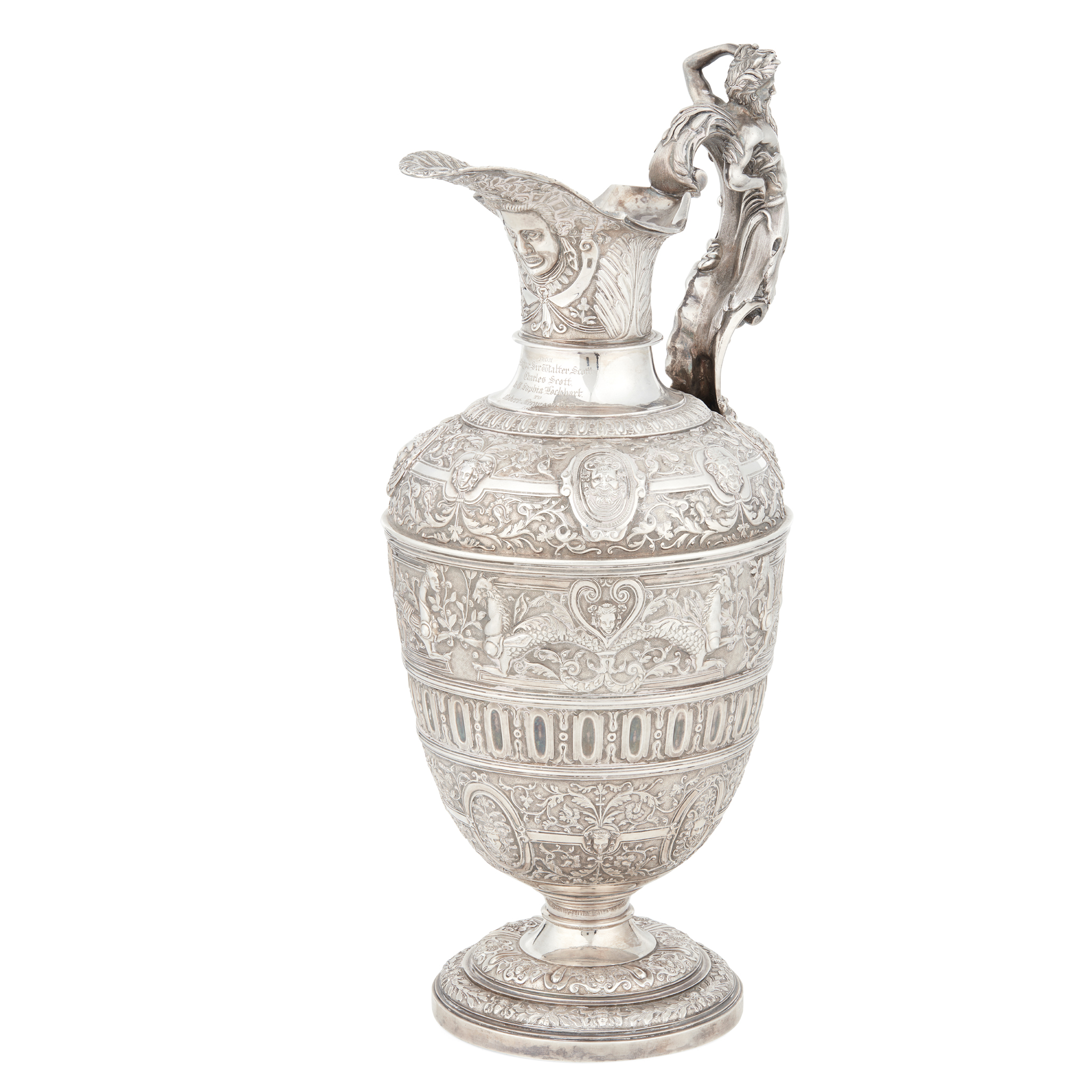
A William IV Renaissance style claret jug, after Cellini

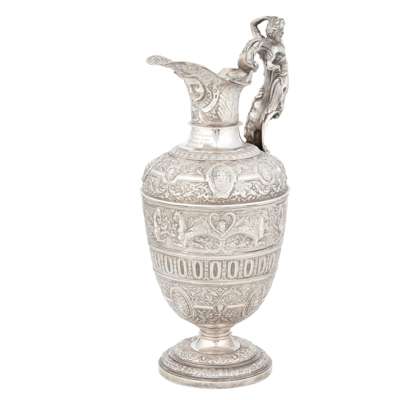
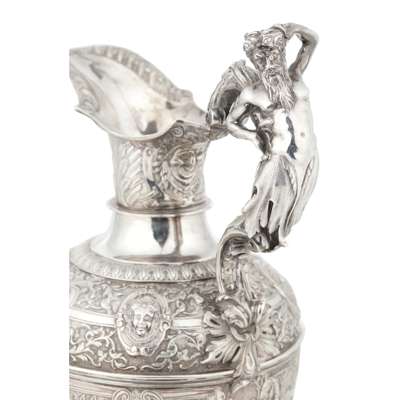


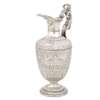
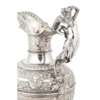

Auction: 05 March 2024 from 10:00 GMT
Description
WE, London 1830, of classic claret jug form, with all over chased scroll and foliate decoration, mythical depictions in a border to the waist and engraved presentation inscription to the neck, the handle formed as the bust of Bacchus, boldly decorated spout, raised on a tiered circular foot with foliate detail
Dimensions
Height: 38cm, weight: 75.5oz
Footnote
Note:
Inspiration can often be found from the past and the Classical period is one which has been emulated throughout the generations.
Born in Florence in 1500 Benvenuto Cellini was definitely a product of the polymath culture of the Renaissance.
With his father a musician, there was always a natural musical talent of which his father had hoped he would follow in his footsteps, but initially Cellini took an apprenticeship with a goldsmith. His artistic passions overlapped and he was a skilled, draughtsman, artist, sculptor and musician.
At a time of political upheaval across the continent, Cellini was recruited as a soldier where with victories, he was able to combine his craftsmanship with medals, with very few remaining, but examples can be found in the Uffizi gallery.
Patronage followed with the Medici family and even Francis I of France, where he was able to complete one of his most famous and authenticated works, the Gold Salt (1540) now in the Kunsthistorisches Museum, Vienna.
Although it is always difficult to attribute work or designs to Cellini, his iconic style looked to the past, with influences from the Roman Empire, Classical swags, and heavy embellishments.







